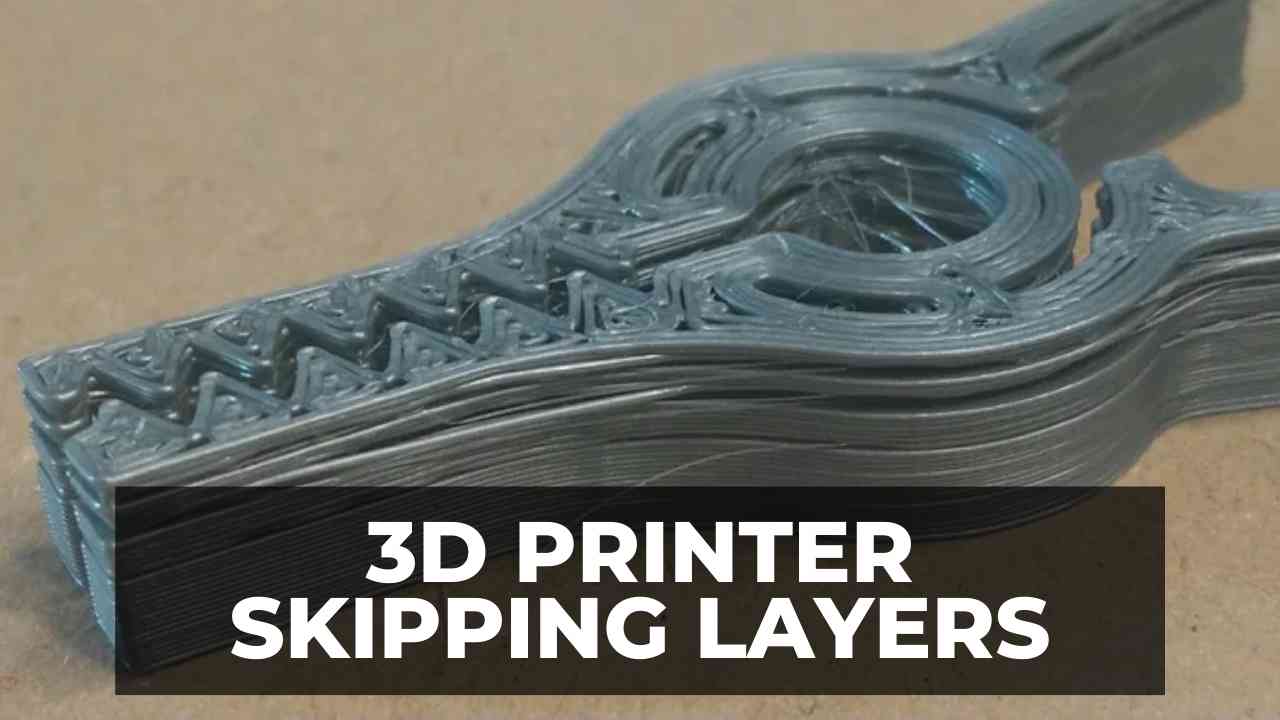
3D Printer Skipping Layers: EVERY Issue Solved


At 3DSourced we’ve covered everything 3D printing and 3D since 2017. Our team has interviewed the most innovative 3D printing experts, tested and reviewed more than 20 of the most popular 3D printers and 3D scanners to give our honest recommendations, and written more than 500 3D printing guides over the last 5 years.
Layer skipping is a big problem in 3D printing because of how each layer fits and makes up your overall print. A 3D printer skipping these layers leads to unstable, failed prints that are as frustrating as they are wasteful.
But do not fret – in this article, we’ll explain every possible reason your 3D printer could be skipping layers, as well as how to fix each issue.
If you’re unsure which issue is the cause of the layer skipping, run through this article in order, as we’ve designed this article as a checklist with the most likely culprits top.
Top Reasons Why 3D Printer is Skipping Layers
- Print Speed Too Low or High
- Incorrect Printing Temperature
- Cooling Fan Set Too Fast
- Incorrect Print Settings for Your Filament
3D Printer Skipping Layers: Mechanical Issues
Why is My 3D Printer Skipping Layers?
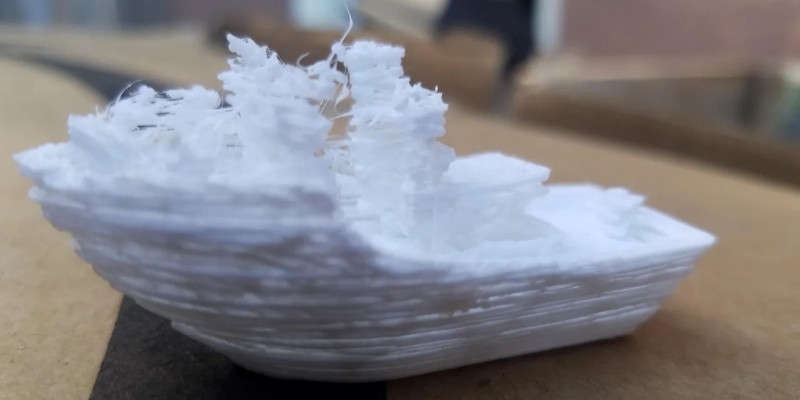
Your 3D printer likely skips layers due to either incorrect printer settings like printing too fast, too high cooling fan speed, or printing at the wrong temperature. Any issues that affect layer adhesion can also lead to layer skipping.
It’s also possible that the fault is mechanical. Uneven print beds, a bad z-offset, or an unstable printing frame are likely causes for layer skipping as well.
Print Speed Too Low or High
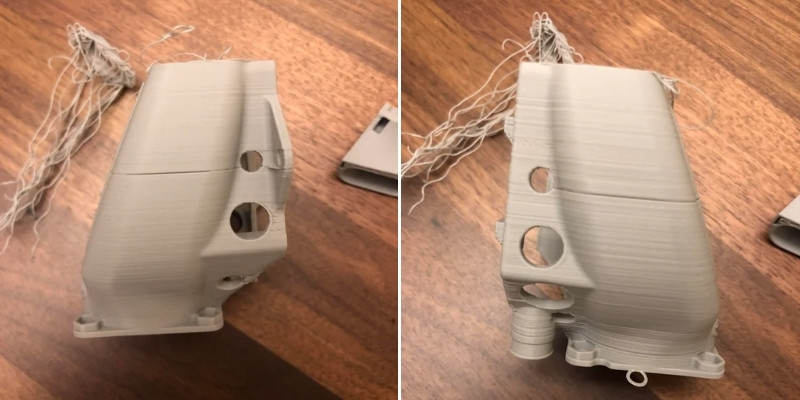
If your 3D printer is skipping layers, it could be because your printer is set to extrude too quickly, not giving it enough time to disperse enough filament onto each layer.
On the other hand, if your print speed is set too low, then it will take too much time for the filament to solidify properly and the layers won’t set as they should.
How to Fix
If your 3D printer is skipping layers, then it’s more likely because your print speed is too fast than too slow. A good fix for this is to gradually reduce the print speed until your prints turn out better formed.
Be sure not to overcorrect, however, as you also don’t want your speed to be too low. Reducing print speed by small measures each time will ensure you find the sweet spot where your 3D printer doesn’t skip layers.
Incorrect Printing Temperature
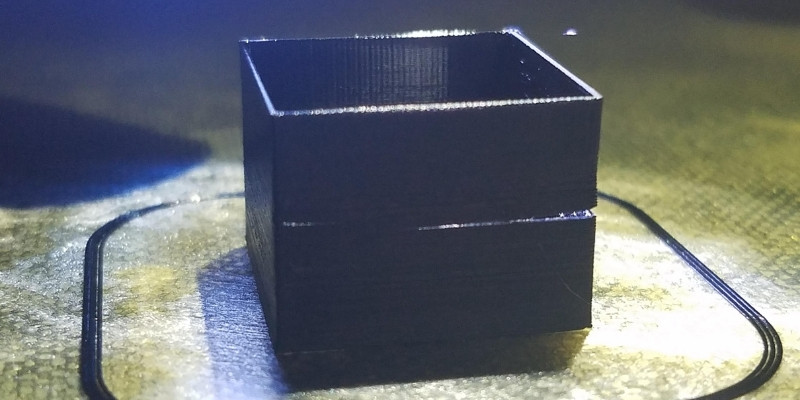
Layers in FDM printing need to be at a good temperature to adhere together while printing, but also be cool enough to set in the correct shape.
If your print temperature is too low, then the layers won’t properly stick together and you’ll find gaps and skips in them.
How to Fix
You can reliably fix a too-low print temperature by increasing in 5℃ increments and keeping a close eye on your 3D printer’s nozzle as it changes layers.
If the layers are still not adhering well together, keep increasing the print temperature until you see some good results.
Once again, it’s important to avoid overcorrection. Overheated filament will take longer to set and cause warping.
Cooling Fan Set Too Fast
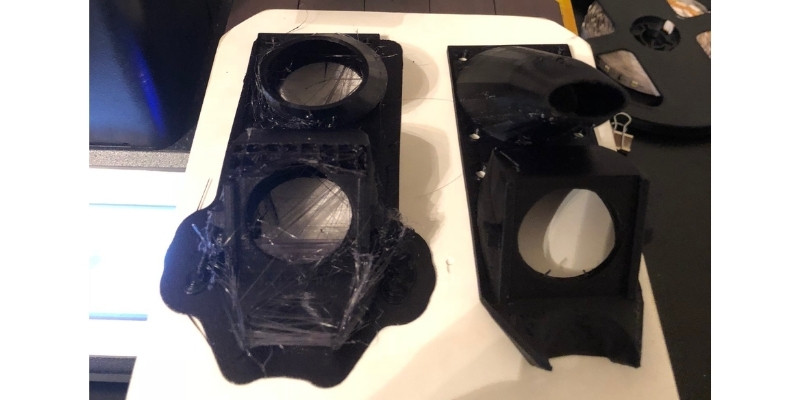
Another issue could be that your fan is cooling the filament too quickly – and making it solidify before each layer can properly adhere.
If changing nozzle temperature doesn’t help, or at least doesn’t make as much of a change as you’d like, then the issue could instead be that your cooling fan is set too fast.
How to Fix
Gradually lowering your fan speed will help you control the filament’s temperature and help the layers adhere properly. This should help in the same way adjusting your extruder temperature does, so try each one separately until you find the exact settings that are right for you.
Efficient cooling is especially important during the first few layers to ensure good initial adhesion.
You may want to consider not using the fan at all at the beginning of the print – or at very low speeds – so the first layers stick well and increase the likelihood of the following layers acting as they should.
Incorrect Print Settings for Your Filament
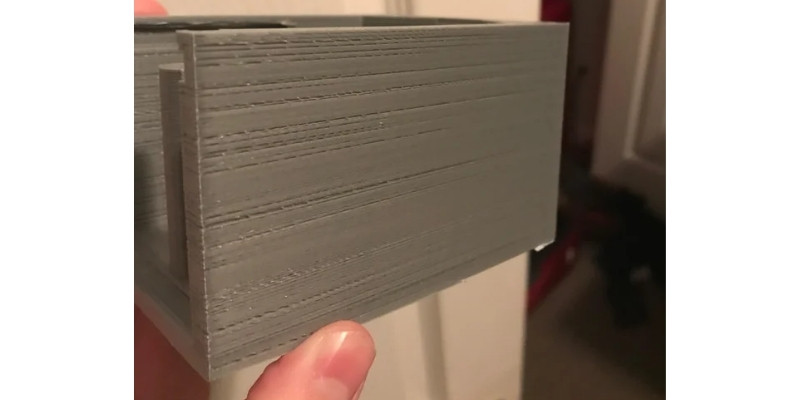
Each filament suits different print settings. If you’ve found success with PLA but have since swapped to PETG, forgetting to adjust the settings accordingly can cause a number of 3D printing issues, including layer skipping.
How to Fix
When changing out filaments, checking the settings recommended by your chosen manufacturer and then altering your slicer settings accordingly will help you avoid a variety of issues.
These settings include:
- Nozzle Temperature
- Print Speed
- Flow Rate
- Nozzle Diameter
- Heated Bed Temperature
- Fan Speed
Always be sure that these settings are ideal for your filament before printing to avoid layer skipping.
Read more: the best slicer settings
3D Printer Skipping Layers: Mechanical Issues
Problems with layer skipping in 3D printing aren’t always to do with incorrect settings. Sometimes there are mechanical issues that require manual fixes.
If you’re confident that your settings are correct but are still having issues with layer skipping, it could be due to one of the problems discussed below.
Be sure that your 3D printer is completely cooled down and, if appropriate, switched off entirely before attempting these fixes.
Poorly Adjusted Z-Axis
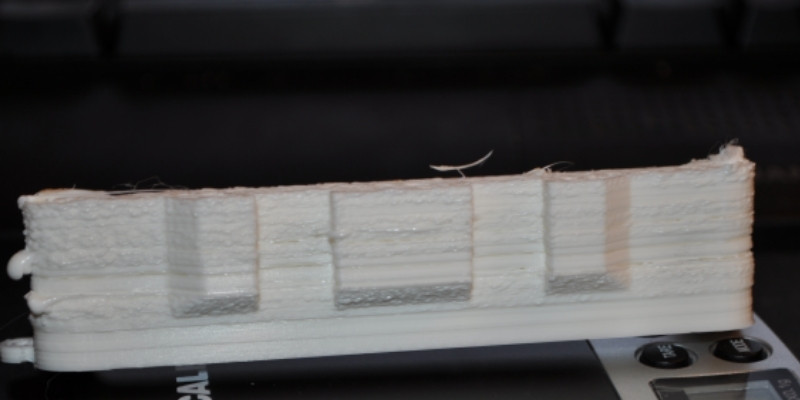
Z-axis in 3D printing refers to the vertical movement of your extruder as it prints. The settings can be complicated to adjust, but a poorly set Z-axis will cause layer skipping and incorrectly placed filament in your prints.
How to Fix
Adjusting your Z-axis is more hands-on than simply altering your slicer settings. It’s important to ensure your nozzle can move up and down freely and without stuttering or stopping to ensure a smooth transition between layers with a lowered likelihood of skipping.
It’s also a good idea to adjust your layer height for extra safety. Aligning your nozzle height with your chosen layer thickness leads to more evenly and accurately dispersed layers.
You can do this by hand. If there are skips or stops, then you may need to look at your 3D printer’s frame, which we discuss in the next section.
Frame Issues
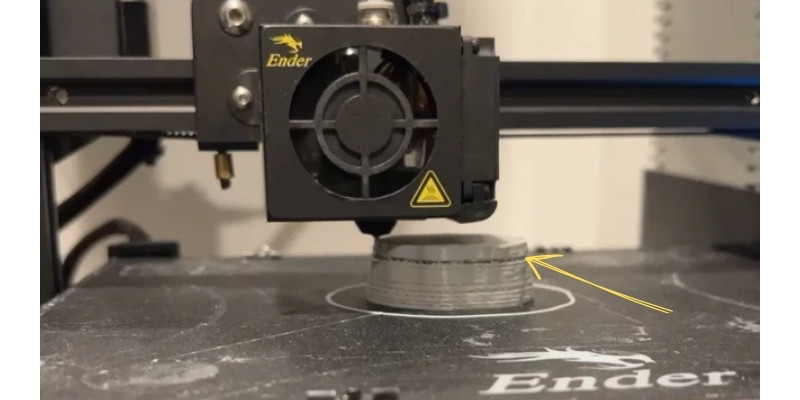
3D printers need to be sturdy to be reliable, and each individual part needs to work seamlessly together for consistent results.
If any part of your printer’s frame has come loose, then layer skipping could be the least of your worries. Physical faults with a 3D printer can be as dangerous as they are frustrating.
Because of the heat necessary for printing, an unsafe printer can also be a fire hazard. So regularly checking its stability is a good habit to get into.
How to Fix
The solution to this issue is a simple once-over of your 3D printer. Ensuring all screws are tightened and all moving parts are free of debris and can move freely is imperative for reliable printing.
The rods and bearings that hold your printer’s frame should also be kept in good condition, as they’ll be less effective if they’re worn or damaged.
If you’ve had your 3D printer for a while, then it may be worth replacing these parts to help keep your printer’s structure upright and reduce the odds of stuttering and layer skipping.
Uneven Print Bed
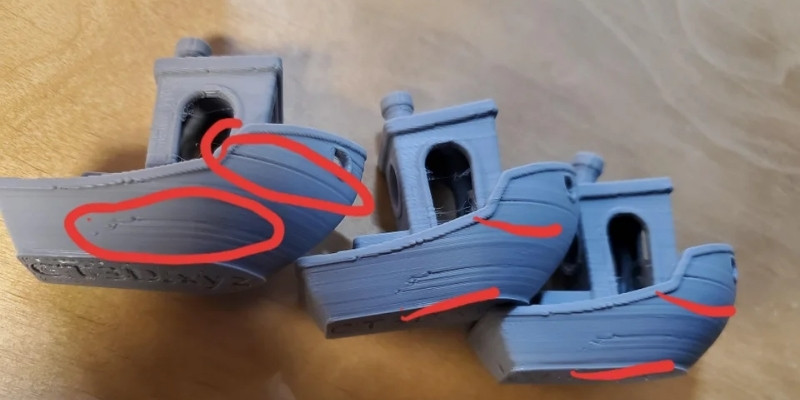
A flat print surface is important for reliable layer printing, and an uneven surface will lead to incorrectly placed or even entirely missed layers.
This is especially damaging for the initial layers of your print, and will cause layer skipping and warping, ultimately ruining your project.
How to Fix
Ensuring your print bed is perfectly level before printing is a good habit to get into. This isn’t as much of an issue if you have a printer equipped with automatic bed leveling, but if you don’t then you will need to manually level it.
Even a few millimeters could make all the difference, which is difficult to detect by eye. A trustworthy method to ensure good bed leveling is to use a metal ruler held on one end on your print bed.
If the ruler maintains even contact across the bed, then it should be fine. But if the ruler seems to stay above the other end of the bed, then it needs to be adjusted.
Be sure to do this from different starting points on the bed. The bed may appear level if the ruler is on an incline, so move it around and hold it from different places to ensure reliable leveling.
Clogged Nozzle
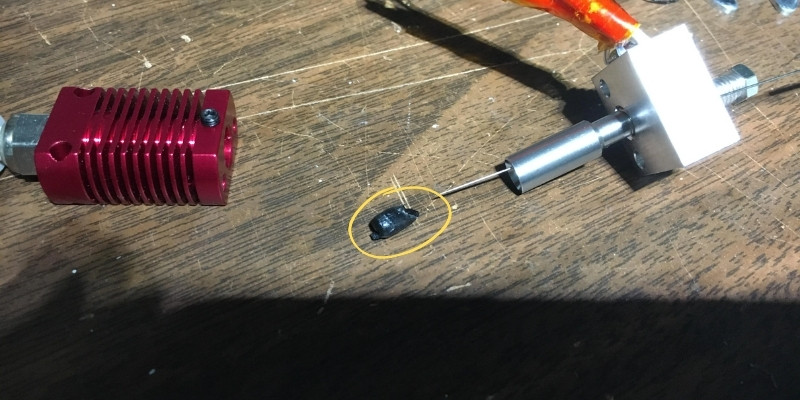
Extruders can become blocked over time for a variety of reasons. Damaged or wet filament, improperly set extruder temperatures, or worn-out nozzles lead to unfortunate clogs.
These clogs and blockages cause many extrusion issues. Filament dispersal will become unreliable, and over- and under-extrusion will cause problems between layers, including layer skipping.
How to Fix
Cleaning out your nozzle is a good practice that will help avoid layer skipping and extrusion issues. You can do this with a very fine needle, a wire brush, or by cold pulling clear filament through the nozzle, which will essentially ‘floss’ any stuck filament out.
Be sure the nozzle is completely cool before attempting any of these methods.
Like rods and bearings, it’s also worth considering replacing your nozzle entirely if the problem persists.
Filament Stripping
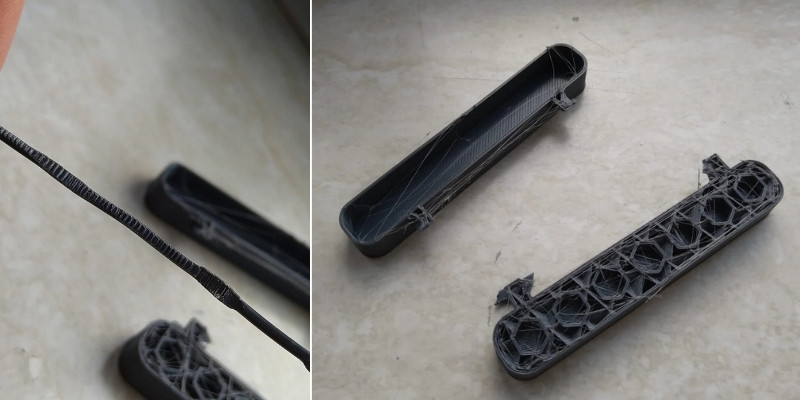
If you notice a clicking sound coming from your extruder while printing, then you may need to check for filament stripping.
This occurs when the edges of the extruder cut too far into the filament and the material strips and strings from the cold line. This causes extrusion issues similar to those of a clogged nozzle, and is a likely cause of layer skipping, especially if this skipping persists despite your settings being correct and your 3D printer having been retightened and recalibrated.
If left unchecked, filament stripping will cause severe extrusion issues that can be very complicated, or expensive, to fix.
How to Fix
The best solution for filament stripping is prevention. If you notice this clicking noise early, then the best thing to do is shut down the printing process, wait for all parts to cool down completely, and then remove the nozzle from the printer and clear the gears out thoroughly with a wire brush.
This requires almost completely dismantling the extruder and its surrounding parts to clean it as deeply as it needs. So be sure to keep an eye and ear on your printer to avoid this problem altogether.
If you feel the problem is with filament stripping but haven’t caught it early enough, then you may need to completely replace your extruder or even extruder system to stop the issue.
Similar guides:
- Tips and Tricks: Printing Overhangs, Bridges
- Troubleshoot 3D Prints Prints Pillowing, 3D Printer Stringing and Layers Splitting
- Circles Not Coming Out Round? Our Full Guide
- 3D Print Layer Shifting: The Complete Guide
- 3D Print First Layer Problems: Every Issue Solved
- How to fix lines in your 3D prints




















